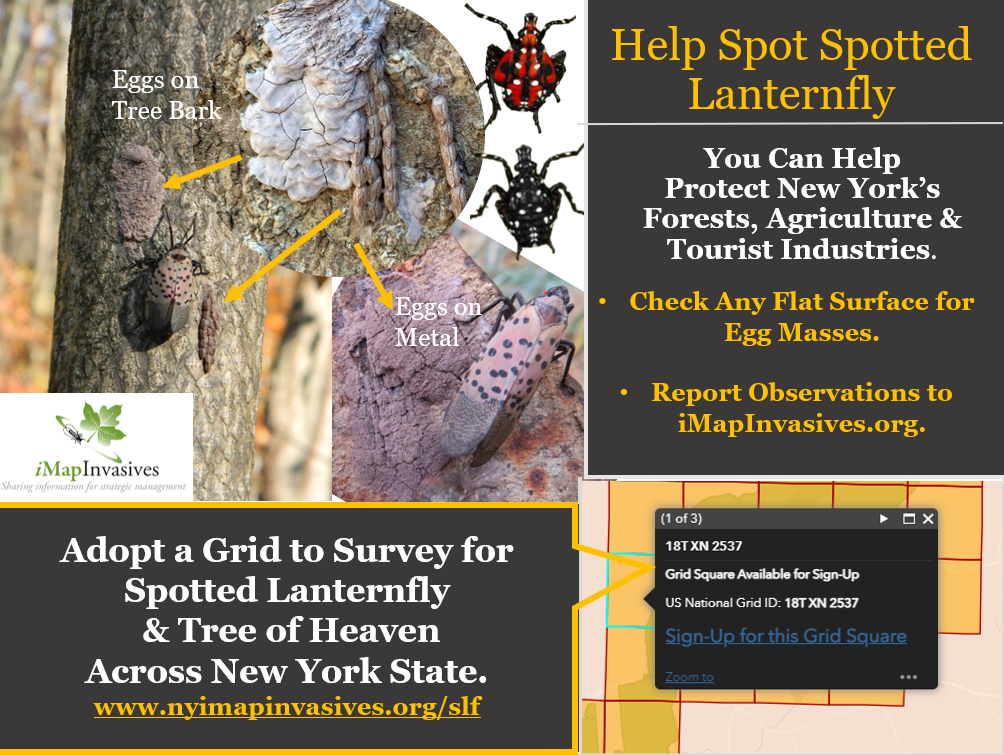Article contributed by Thomas Allgaier-New York State Department of Agriculture and Markets in the 2021 Winter Newsletter release.
Spotted lanternfly is a planthopper, similar to a large aphid. The species is native to China, Taiwan, and Vietnam. It has spread and become an invasive pest in Japan, South Korea, and since 2014, the United States, where it was first detected in Berks County, Pennsylvania. The United States Department of Agriculture (USDA) and the State of Pennsylvania have been combating this new invasive pest since then. The spread has been slowed but SLF has gradually dispersed to other counties and states, including New York.
SLF feeds on upwards of 70 species of host plants. Of more concern to us at the New York State Department of Agriculture and Markets (AGM) are grapes, apples, and hops, which are each economically significant crops for the agricultural industry in New York and across the nation. Being that New York is the second-largest apple producer and third-largest grape producer in the US the state stands to lose $358.4 million in annual crop yields (DEC ). SLF additionally feeds on forest species that are important to New York farmers such as maple and walnut trees.
Currently, in New York, SLF populations have been detected in Orangeburg, Staten Island, Port Jervis, Sloatsburg, and Ithaca. Multiple life stages of the SLF have been found in these locations.
In most cases, these sightings have included viable egg masses, which can survive New York winters and can be found during the winter months into spring. Signs of SLF presence include brown colored egg masses laid in rows with a waxy mud-like gray colored substance over it; in addition to, honeydew build up under plants that attract mold, and sap oozing from tree trunks that appear wet and can have an odor.

Help Spot Spotted Lanternfly
Spotted lanternfly (SLF) management actions are more effective and regions can better prepare for the impacts of this insect when new infestations are found early.
New York State is seeking volunteers like you to look for SLF egg masses, numphs and adults, and reporting locations of SLF’s preferred host, tree of heaven (TOH) in your area. You do not need prior experience to get involved, anyone can learn what to look for and how to report your observations to New York’s official invasive species database, iMapInvasives (attend a virtual training).
NYS Department of Agriculture and Markets and the Office of Parks, Recreation, and Historic Preservation have identified 1km grid squares across the state where volunteer survey efforts would be most helpful. These may be close to known infestations, along major pathways, and/or near important commodities that could be harmed by SLF.
You can help stop protect New York’s forests, agriculture and tourist industries by joinging this state-wide early detection survey effort for SLF and tree of heaven.



